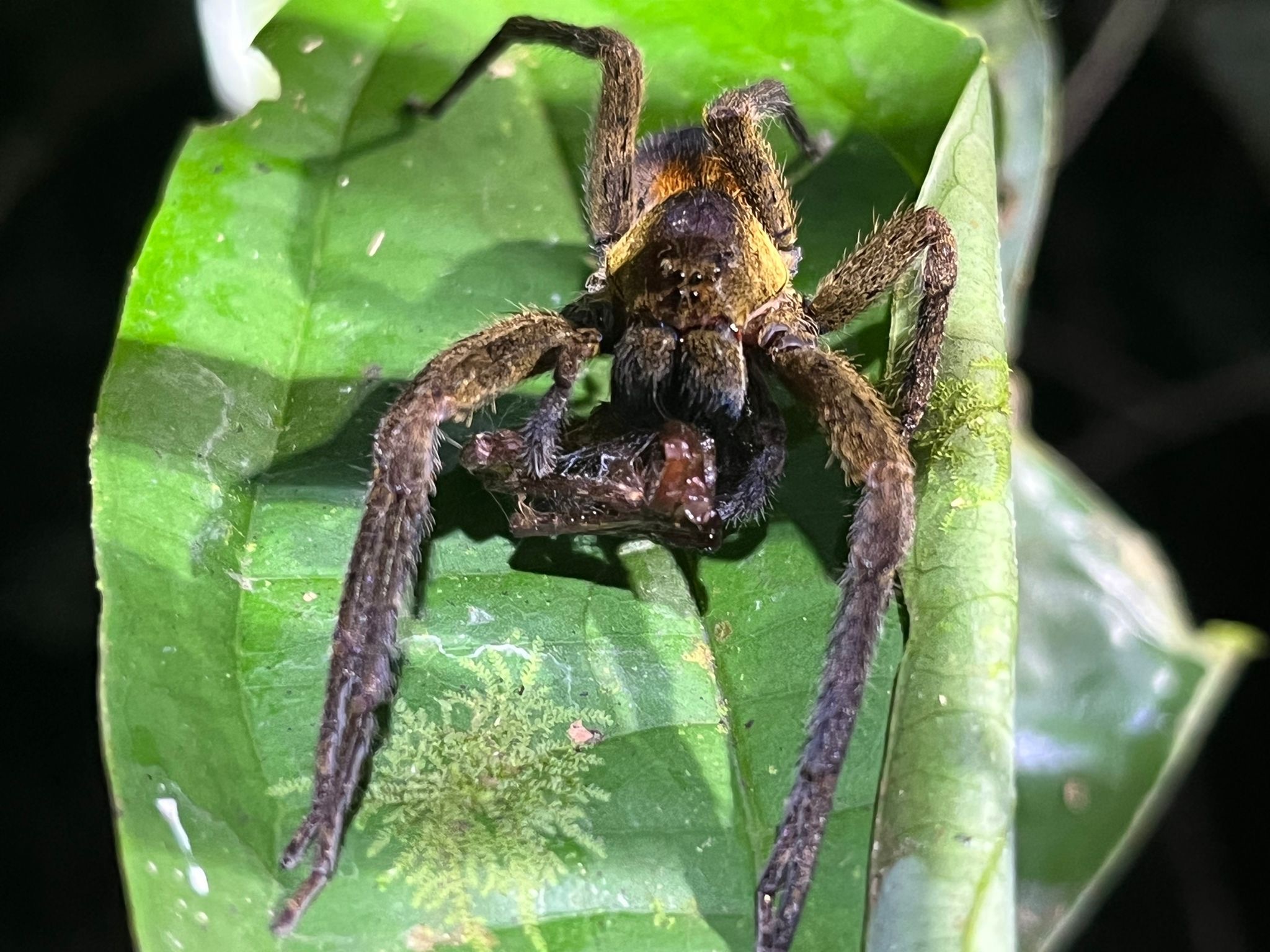The Infierno project, which is nestled in Peru’s Amazon rainforest within the Madre de Dios department, is home to numerous unique species. The project itself conserves habitat for at least 20 threatened species, including the Jaguar, Black Caiman, Giant Otter, Harpy Eagle and Spider Monkey.
Among the many rare insects that live in this jungle crawling with life is the Banana Spider, also known as the deadliest spider in the Amazon. The banana spider is one of the most venomous on earth and is known for its characteristic defensive posture in which it raises its front legs straight up into the air while swaying from side to side, a move which exposes its fangs and serves as a warning to predators.
The banana spider belongs to the genus Phoneutria, which in Greek means “murderess” – a fitting name for this venomous species. A single bite from one of these spiders can be deadly, although the amount of venom determines a bite’s severity. The threat of a bite is also dependent on whether it is delivered by a male or female, with the larger female delivering a much greater and more potent load of venom. But a deadly attack is very rare. Injecting all of its venom (a deadly amount) would leave the banana spider vulnerable to attack and unable to immobilise its prey.
These spiders are large with bodies up to 2 inches (5cm long) and a leg span extending up to 7 inches (18cm). The banana spider is unique in that it does not maintain a web, but rather wanders the jungle floor at night searching for pray and spends its days hiding in dark and moist places, such as fallen logs, rocks and termite mounds. This spider kills both by ambush and attack, eating not only insects, but small amphibians, reptiles and even mice.
It was therefore both a thrill and a terror for our Technical Manager, Daniel Fisher, to stumble across a banana spider during a recent visit to the Infierno project. A night time expedition brought Dan face to face with one of these spiders, although with staff guides at his side, a far more relaxed viewing of this incredible species was possible.
At the Infierno project, staff are trained in forest patrols and in identifying species such as these Banana Spiders. Forest patrols focus on monitoring the ecosystem, including biodiversity and forest health, and are critical to understanding how the forest is changing over time. The patrols are also essential in terms of forest surveillance and ensuring the project area is safe from external threats, such as deforestation and forest degradation. This targeted work, funded by the sale of carbon credits, is supporting almost 8,000 hectares of an incredibly unique hotspot of biodiversity in the Amazon.
Daniel was able to capture the Banana Spider on camera, and escaped without a bite!
